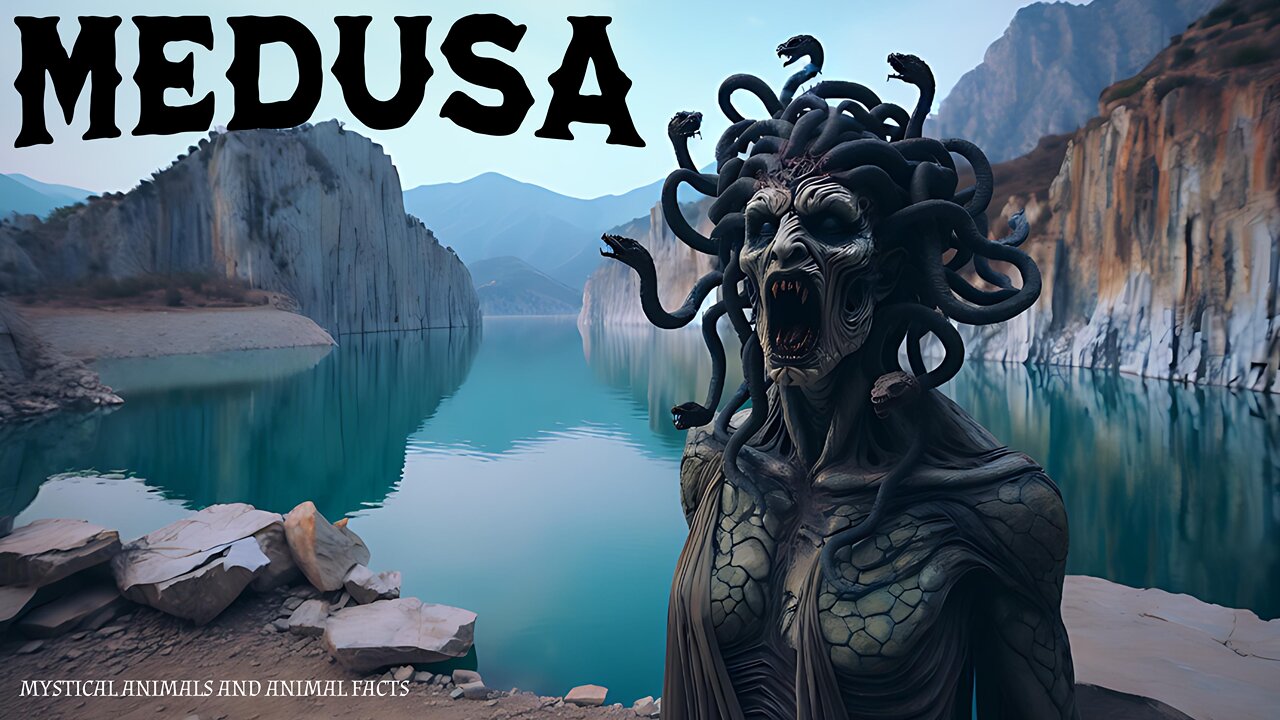Premium Only Content

Medusa creature from Greek mythology - mini documentary
Shirts and more
Designs Redbubble
https://www.redbubble.com/people/ReneMM/shop?asc=u
Spreadshirt.at
https://www.spreadshirt.at/shop/user/renemm/?srEdit=pa#?affiliateId=1257693
Spreadshirt.com
https://www.spreadshirt.com/shop/user/renemm/?srEdit=pa#?affiliateId=11625
Shirtee.at
https://www.shirtee.com/de/catalogsearch/result/index/designer_id/112048/all_stores/
1/
Medusa is a central figure in Greek mythology, known as one of the three Gorgons. The Gorgons, daughters of the sea deities Phorkys and Keto, are described in ancient sources such as Hesiod's “Theogony” as terrifying creatures with snake-studded hair, bronze hands, scaled armor and a gaze that turns anyone who looks at them to stone. Among them, Medusa is the only mortal, which makes her the target of heroic myths, especially in the tale of Perseus. Her origins and role vary according to tradition: while older sources depict her as monstrous from birth, the Roman poet Ovid describes Medusa as a once beautiful woman who was cursed by the goddess due to a desecration of the temple of Athena by Poseidon, causing her hair to turn into snakes and her gaze to become deadly. This later myth emphasizes themes of divine punishment and transformation, but the original Greek tradition dispenses with such a back story and presents the Gorgons as inherently terrible creatures of chaos. Medusa's death is brought about by the hero Perseus, who is asked by King Polydektes to bring her head as proof of his bravery. With the help of divine tools - including a reflective shield of Athena, winged sandals of Hermes, a cloaking cap of Hades and a sickle sword - Perseus approaches Medusa in her sleep, avoids direct eye contact and decapitates her. From her neck emerge the winged horse Pegasos and the giant Chrysaor, offspring of her union with Poseidon. The severed head retains its petrifying power, which Perseus uses in later adventures, for example to conquer the sea monster Ketos, before handing it over to Athena, who incorporates it into her shield, the Aigis. Medusa's head thus becomes an apotropaic symbol, a protective symbol against evil, which is often depicted in ancient Greek art and architecture as a gorgoneion - a stylized grimace with a wide open mouth, outstretched tongue and snake hair. In cultic contexts, the image of Medusa served both to scare off enemies and to ward off evil forces, for example on temple friezes, shields or gravestones. Her ambivalence as both a destructive and protective force is reflected in her mythological dual role: as a slain monster, she embodies the victory of civilization over savagery, while her iconographic use underlines her enduring power. Archaeological finds such as the archaic Medusa sculpture from the temple of Artemis in Corfu or vase paintings show the evolutionary depiction of the Gorgon from an animal-like grimace to a more feminine, but nevertheless terrifying figure. In Homeric epics, the Gorgon is mentioned as a terrifying image in battle, for example on the aegis of Zeus or the armor of Agamemnon. Medusa's myth is also linked to geographical localizations: Ancient authors such as Herodotus locate the Gorgons in Libya, which points to North African influences in the Greek imagination. Later interpretations, especially in the Renaissance, focused on the allegorical interpretation of Medusa as the embodiment of danger or female threat, but the original mythological function remains anchored in her role as a liminal figure - a being on the threshold between life and death, the human and supernatural spheres. Her presence in initiation rites, for example as a warning against breaking taboos, underlines her cross-cultural symbolic power. Despite her destruction by Perseus, Medusa remains present through her descendants and her head, which ensures her narrative immortality in Greek mythology.
-
 2:00:59
2:00:59
BEK TV
1 day agoTrent Loos in the Morning - 10/03/2025
20.8K -
 LIVE
LIVE
The Bubba Army
23 hours agoDiddy BEGS for Mercy in Judge Letter - Bubba the Love Sponge® Show | 10/03/25
1,362 watching -
 LIVE
LIVE
ZENNY
4 hours agoBO7 IS HERE BOT POV MF HAHAHAHA 6v6 PG18+ | UNFILTERED CHAT | CURSES AND BAD
153 watching -
 15:17
15:17
Actual Justice Warrior
2 days agoBLM Leader CONVICTED Of Fraud
33.1K48 -
 13:19
13:19
Zoufry
2 days agoThe Grandpa Gang Who Robbed a Bang For $16 Million
29.2K5 -
 2:18:45
2:18:45
The China Show
3 days agoChinese Citizens STRIKE BACK + China's Sick New Punishment Exposed - #282
27.8K7 -
 25:20
25:20
The Chris Cuomo Project
1 day agoChris Cuomo EXPOSES Lies Behind the Government Shutdown
26K56 -
 21:03
21:03
Nate The Lawyer
1 day ago $4.04 earnedChicago Mayor Brandon Johnson Under Fire Over ‘Defund’ Remarks Amid Crime Concerns
27.1K14 -
 8:05
8:05
MattMorseTV
20 hours ago $14.05 earnedSchumer’s SECRET AGENDA just got EXPOSED.
56K50 -
 16:37
16:37
Robbi On The Record
14 hours ago $4.86 earnedThe Theater of Manufactured Outrage - When Left and Right Dance for the Same Puppet Master
19.8K10
